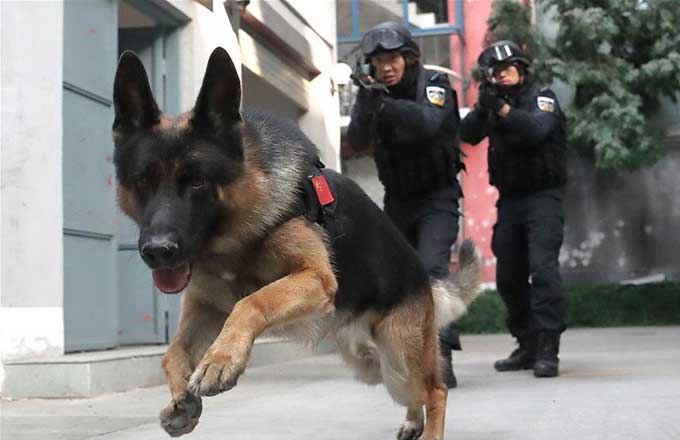Travel in space poised to spread its wings
Chinese space scientists are developing a cutting-edge aerospace vehicle that, if successful, will enable the public to make space journeys.
Researchers at the China Academy of Launch Vehicle Technology are developing a spacecraft that will be propelled by a combination of turbine engine, ramjet and rocket engine, according to the academy, which is part of China Aerospace Science and Technology Corp.
Zhang Yong, deputy chief designer at the academy's research and development center, said the spacecraft will use turbine engines, like those on planes, or rocket-based combined-cycle engines when it takes off from a conventional runway.
After it reaches a certain speed, the ramjet will be activated to thrust the spacecraft into the stratosphere or to the next layer of the Earth's atmosphere, the mesosphere. At this point, rocket engines will be used to put the space vehicle into orbit, Zhang added.
A ramjet is a form of jet engine that uses forward motion to compress incoming air.
With a much lower operational cost and a higher safety guarantee compared with rockets, the space vehicle will be capable of transporting humans hundreds of kilometers above the Earth, Zhang said. It will be used for astronaut missions and for space travel by the public, he added.
It will have a huge potential in space tourism or intercontinental passenger travel, Zhang said.
"Space travelers will have a short period of weightlessness when the vehicle reaches an altitude of about 100 kilometers. If the spacecraft continues to fly up to 400 km above Earth, passengers will experience what it is like to be in a space station," he said.
Yang Yang, a designer at the academy's Institute of Combined-Cycle Aerospace Vehicle Technology, said all the space-exploring nations now use rockets for such activity.
"Rockets have an ultrafast acceleration during flight, resulting in very strict requirements for astronauts' physical condition.
In comparison, the combined-powered spacecraft will gather speed slowly and gently, making the air pressure acceptable to non-astronauts," he said.
The space vehicle can also be used to deploy satellites, he added.
Wang Ya'nan, editor-in-chief of Aerospace Knowledge magazine, said, "Such a vehicle will be able to fly over the Pacific Ocean within an hour, because it will travel in near-space at a speed of 7,000 km/h."
Yang Yuguang, secretary of the International Astronautical Federation's Space Transportation Committee, said the rocket-based combined cycle and turbine-based combined cycle technologies will be the key to the success of the project.
zhaolei@chinadaily.com.cn
- Gemdale to lease SF space to Amazon's Twitch unit
- Chinese researchers plan space travel at lower cost for common people
- New robots to vie for space in the operating room
- Daphne Mallet: More art space can diversify hutong culture
- Heritage sites protected on ground and from space
- High-tech public toilet "Fifth Space" to open in Taiyuan
- SpaceX launches space station docking port, rocket lands on ground
- Is it a thing? 10 odd jobs where you can make good money
- Message on a bottle: Mineral water company launches drive to find missing children
- Sun Yat-sen champion of national integrity, unity: Xi
- Four killed, two injured after house collapses in C China
- Cross-Straits forum held to commemorate Sun Yat-sen















